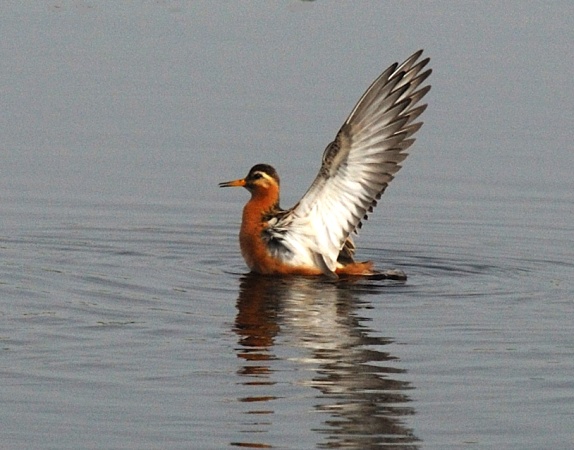
16 July 2013
Though the solstice was three weeks ago, the sun still hasn’t set in the Arctic. Some arctic mammals have no sleep/wake circadian rhythm because there’s no light/dark cycle. What do arctic birds do?
In 2012 the Max Planck Institute of Ornithology studied four species that nest near Barrow, Alaska. They found that some species stayed on a 24-hour clock while others had no daily pattern.
The birds’ circadian rhythms varied based on species, lifestyle, sex and breeding stage. Here are the four studied species and their lifestyles:
- Semi-palmated sandpipers are totally monogamous and share incubation and child rearing.
- Pectoral sandpiper males have multiple wives. Only the females incubate and take care of the kids.
- Red phalaropes reverse these roles. The females have multiple husbands. The males incubate and raise the kids.
- Lapland longspurs are monogamous with the occasional male having multiple mates. Both parents take care of the kids but only the females incubate.
The simplest birds were the lapland longspurs. They never gave up their 24-hour clock. They stayed awake during the “day” and slept when it should have been night, even though it wasn’t.
Red phalaropes, pectoral sandpipers and semi-palmated sandpipers varied their rhythms depending on breeding stage. During courtship they showed no daily pattern at all but during incubation they kept to a clock. Oddly enough it had to do with ground temperature.
Arctic birds nest on the ground and that poses a challenge for keeping eggs warm when the ground is cold. In summertime the ground temperature in Barrow varies from near freezing when the sun is low in the sky (11:00pm to 7:00am) to 60 degrees F when the sun is high (noon to 6:00pm).
The incubating parents — female pectoral sandpipers and male red phalaropes — followed a daily clock so they’d be on the nest when the ground was cold. The non-incubators — male pectoral sandpipers and female red phalaropes — never stopped courting and never developed a daily rhythm.
The exception were the semi-palmated sandpipers. Because they completely share parental duties the pairs threw out the clock during incubation and synched as a couple. “Who cares what time it is? We have each other.”
In the end the study shows that arctic-nesting birds are very flexible. They can be active regardless of time of day, then alter their circadian clocks when their needs change.
Those needs will change soon. The sun will set for the first time on August 1 and the birds will prepare to leave. For some shorebirds, migration has already begun.
For more information read the study at the Proceedings of the Royal Society.
(photo of a female red phalarope in Barrow, Alaska from Wikimedia Commons. Click on the to see the original)